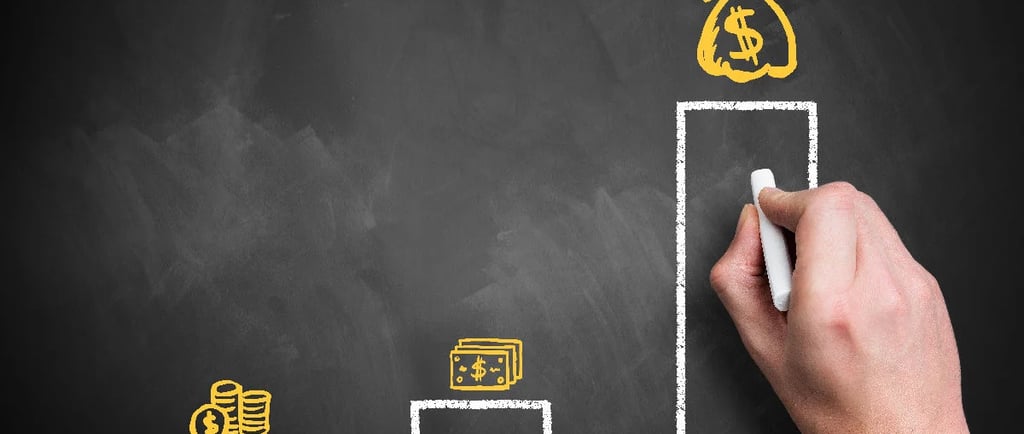How to Pay Yourself the Smart Way in Canada: Owner’s Draw vs. Salary
Should you pay yourself a salary or take an owner’s draw? Learn the pros, cons, and tax impact of each method to choose the best way to pay yourself from your business in Canada.
10/11/20253 min read


How to Pay Yourself the Smart Way (Draw vs. Salary)
You’ve built your business, worked hard, and now it’s time to pay yourself. But how should you do it — as a salary or a draw?
This is one of the most common questions among small business owners, and choosing the right method can affect your taxes, retirement savings, and cash flow.
Let’s go through both options step by step so you can make an informed decision that fits your business.
1. Start with Your Business Type
Before you decide how to pay yourself, consider how your business is structured.
If you’re a sole proprietor or part of a partnership, you’ll usually pay yourself through owner’s draws.
If your business is incorporated, you can choose to pay yourself a salary, dividends, or even a mix of both.
Your legal structure determines what’s allowed — and what makes the most sense for your taxes.
2. What Is an Owner’s Draw?
An owner’s draw is when you take money directly out of your business for personal use. You’re not technically paying yourself a wage — you’re withdrawing profits that already belong to you.
The best thing about a draw is flexibility. You can take money whenever you need it, without setting up payroll or paying CPP (Canada Pension Plan) and EI contributions. It’s simple, fast, and easy to manage, especially if your income changes from month to month.
However, taking a draw also has downsides. Because taxes aren’t deducted automatically, you’ll need to set aside money to pay at tax time. You also won’t be contributing to CPP, which may affect your retirement income later.
This method works best for sole proprietors or partnerships who want flexibility and simplicity.
3. What Is a Salary?
If your business is incorporated, you have the option to pay yourself a salary. This means you become an employee of your own company, and your business pays you a regular wage.
When you pay yourself a salary, you also remit income tax, CPP, and possibly EI to the CRA each pay period. It may sound more complicated, but it comes with some great benefits.
A salary gives you a steady, predictable income — which is helpful for budgeting and applying for loans or mortgages. It also allows you to contribute to CPP and build RRSP contribution room, which helps your long-term savings and retirement planning.
The main downside is that a salary requires a formal payroll setup and regular remittances to the CRA. You’ll also have to pay both the employee and employer portions of CPP, which increases your overall cost.
This method is ideal for incorporated businesses with stable revenue that want to plan ahead financially.
4. What About Dividends?
For incorporated owners, dividends are another way to pay yourself. Dividends come from your company’s after-tax profits and are taxed differently from salary income.
Dividends are simple to distribute and don’t require CPP or payroll deductions, which can save you money in the short term. However, since dividends don’t count as “earned income,” they don’t create RRSP room or build CPP contributions.
In short, dividends are great for tax flexibility but not ideal if you’re looking to grow retirement benefits or qualify for personal credit.
5. How to Choose Between Draw and Salary
If your business is not incorporated, your choice is straightforward — you’ll take draws.
But if you own a corporation, deciding between salary and dividends depends on your goals.
If you value predictability, CPP benefits, and RRSP contributions, a salary is the better route.
If you prefer simplicity, lower payroll costs, and more flexibility, dividends may work better.
Many business owners actually use a mix of both: they pay themselves a modest salary to take advantage of CPP and RRSP benefits, and then top it up with dividends at the end of the year for tax efficiency. This hybrid approach often gives the best of both worlds.
6. Smart Tips for Paying Yourself
No matter which option you choose, a few habits will help you stay on track:
Always separate your business and personal bank accounts. This keeps your records clean and simplifies tax filing.
Set aside tax money regularly, especially if you’re taking draws or dividends. This avoids unpleasant surprises when tax season arrives.
Keep track of all payments you make to yourself, including dates and amounts.
Work with an accountant or financial advisor to plan your compensation strategy each year — especially as your business grows or your income changes.
7. Final Thoughts
Paying yourself the right way isn’t just about taking money out of your business. It’s about finding the balance between tax efficiency, personal income stability, and long-term financial planning.
A salary can provide structure and benefits, while draws and dividends offer flexibility.
The smartest choice depends on your goals, your business structure, and your cash flow.
If you’re unsure what’s best for you, a tax professional or financial advisor can help create a custom pay strategy that minimizes taxes and supports your financial future.
TiKi Tax
© 2025. All rights reserved.
